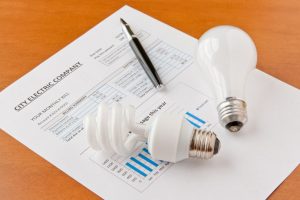What do you do with a jacked-up energy bill? Do you throw it in the trash and hope it never comes back to you? Or leave it on the kitchen counter and see if it’ll change tomorrow? Energy prices continue to soar at these trying times.
There’s no use blaming the market for your energy bill. However, you can instead use energy-saving strategies on how to lower your monthly bills. After all, the best way to cut corners in your home is to just make it more sustainable.
Here are five ideas you can do to conserve and use less energy.
Improve home insulation
HVAC units are typically energy hogs, but you don’t need to trade the comfort they bring just for huge energy savings. Simply improving your house’s insulation can trap the warm or cool temperature inside your home. Add insulation inside the walls, the floors, and the ceiling.
You can also use proper window film solutions such as an energy-saving tinting film or an insulating window film. These can limit the heat from the sun that comes through the windows or prevent the heat from escaping through them during winter.
Draft-proof your home
Shave some costs from your energy bills by draft-proofing your home. Drafts can destabilize the temperature inside your home. Just imagine having a laser-guided cold breeze brushing on your feet one winter night. Or when cooling down a warm wind blowing to your face. You don’t have to worry about your HVAC adding extra effort to heat up or cool the place if there’s no way for a rogue wind to get in. Much like proper insulation procedures, draft-proofing your home traps the temperature in.

Replace old appliances
Appliances and other home tools can work for years and years as long as they’re properly maintained. However, if these appliances weren’t made with energy efficiency in mind, they’ll tend to use up more energy especially if they’re not working up to their full potential.
If that’s the case, then it’s time to retire your veteran appliances. Buy ENERGY STAR-certified appliances, which has the seal of approval of the Department of Energy. These appliances can use up to 50% less energy than other appliances; considering the average lifespan of an appliance, that’s a decade’s worth of energy savings.
Smart thermostats to manage HVACs
To reiterate, HVACs use up huge amounts of energy. They’re also expensive to install and maintain. Consider adding a smart thermostat to regulate your HVAC instead of manually adjusting it now and then. These can be programmed to automatically gauge the required amount of temperature. They can also use sensor to detect your presence, adjusting accordingly to give you maximum comfort or keep usage at a minimum when you’re away.
Use natural light whenever possible
While it sounds counterintuitive to let the sunlight and the heat in your home, natural light can also be a cost-effective solution for your home. Daylighting is the effective use of windows and skylights to brighten up your home without the need for artificial lighting.
According to the DoE, architectural and technological advancements have paved the way for better natural indoor lighting conditions. Your home needs to be constructed in a way that best directs light into your home without letting heat in.
Some energy-saving tips listed here aren’t exactly cheap. Some, like smart thermostats, are relatively new technology. Others, you need to have your home’s construction in mind to pull off. However, all the decreasing energy bills will be the testament to your success, that all that investment in sustainable energy is worth the effort.

